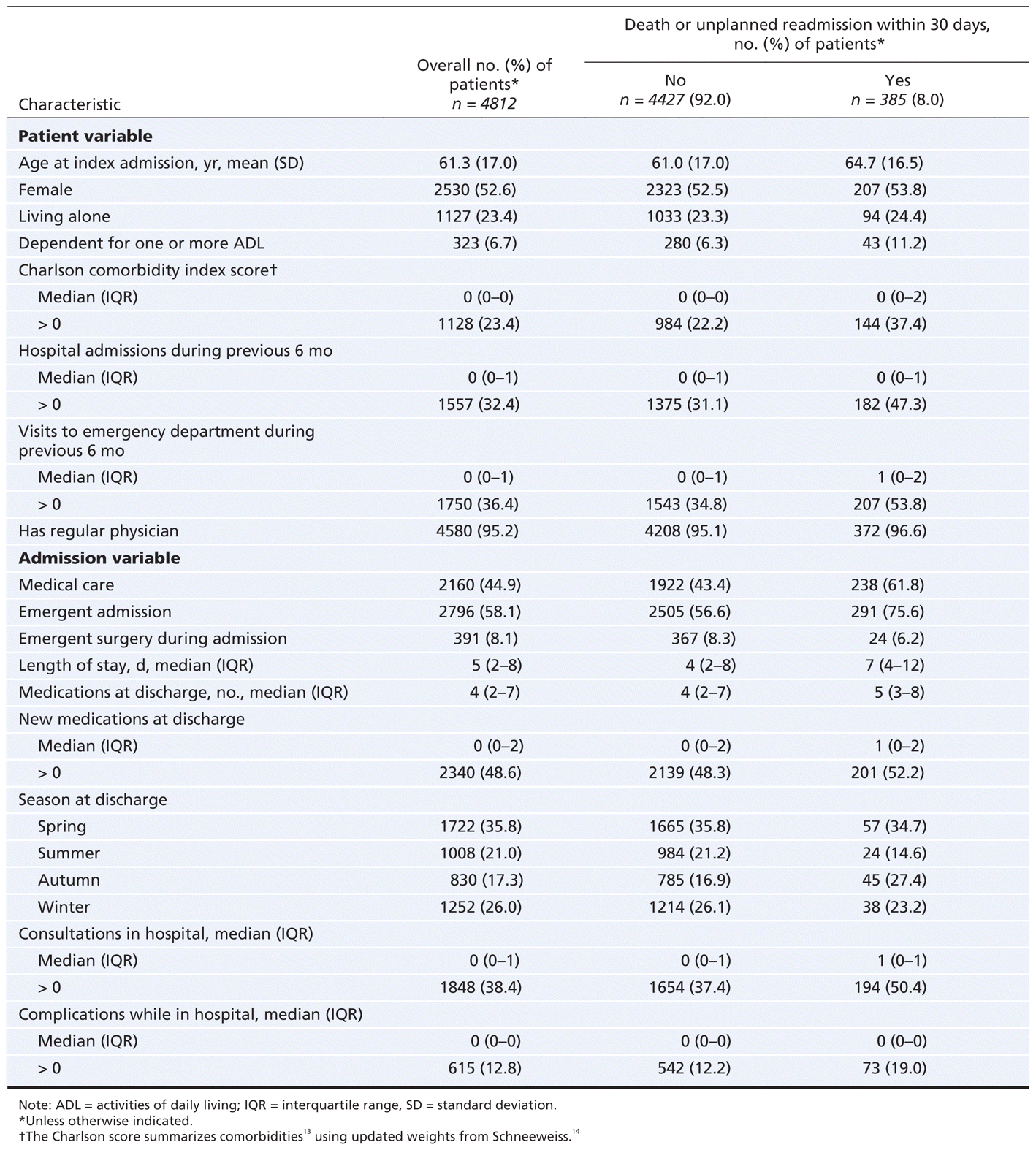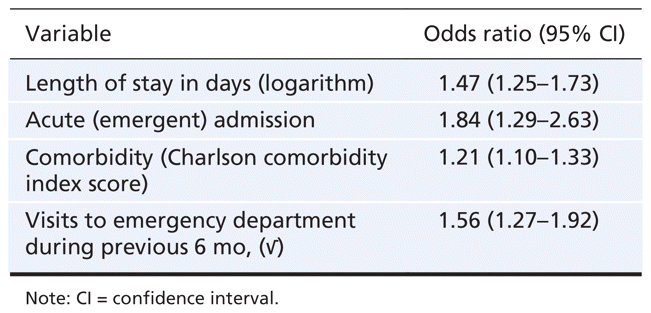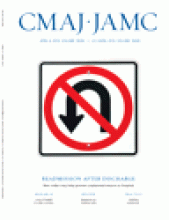Article Figures & Tables
Figures
Figure 1: Calibration curve for the LACE index, based on data representing patients in the derivation and internal validation groups. Note: bars = number of patients with the same LACE score; black line = expected risk of death or unplanned readmission within 30 days after discharge; grey line = observed risk (error bars = 95% confidence intervals).
Figure 2: External validation of the LACE index, as represented by its accuracy for 1 000 000 randomly selected patients discharged from hospital in Ontario between 2004 and 2008. Note: bars = number of patients with the same LACE score; black line = expected risk of death or unplanned readmission within 30 days after discharge; grey line = observed risk (error bars = 95% confidence intervals).

















